screening will be used henceforth except in the context of specific recommendations from professional organizations Evidence Supporting HCC Screening in Chronic Hepatitis B The most wellknown clinical study to support HCC screening is a clusterrandomized, controlled trialIt is amongst the leading causes of cancer death globally (evidence high) Vaccination against hepatitis B reduces the risk of HCC and is recommended for all newborns and highrisk groups (evidence high;And (5) treatment of hepatitis B in special populations, including persons

Multiple Roles For Hepatitis B And C Viruses And The Host In The Development Of Hepatocellular Carcinoma Wangensteen 21 Hepatology Wiley Online Library
Aasld guidelines hepatitis b hcc screening
Aasld guidelines hepatitis b hcc screening-Because the hepatocellular carcinoma (HCC) incidence was high enough New data on defining HCC risk have emerged for hepatitis B virus,1,2 hepatitis C virus,3 and autoimmune hepatitis4 Surveillance is deemed costeffective if the expected HCC risk exceeds 15% per year in patients with hepatitis C and 02%The guidance notes that if ultrasonography is not readily available, then screening should consist of alphafetoprotein every 6 months 69
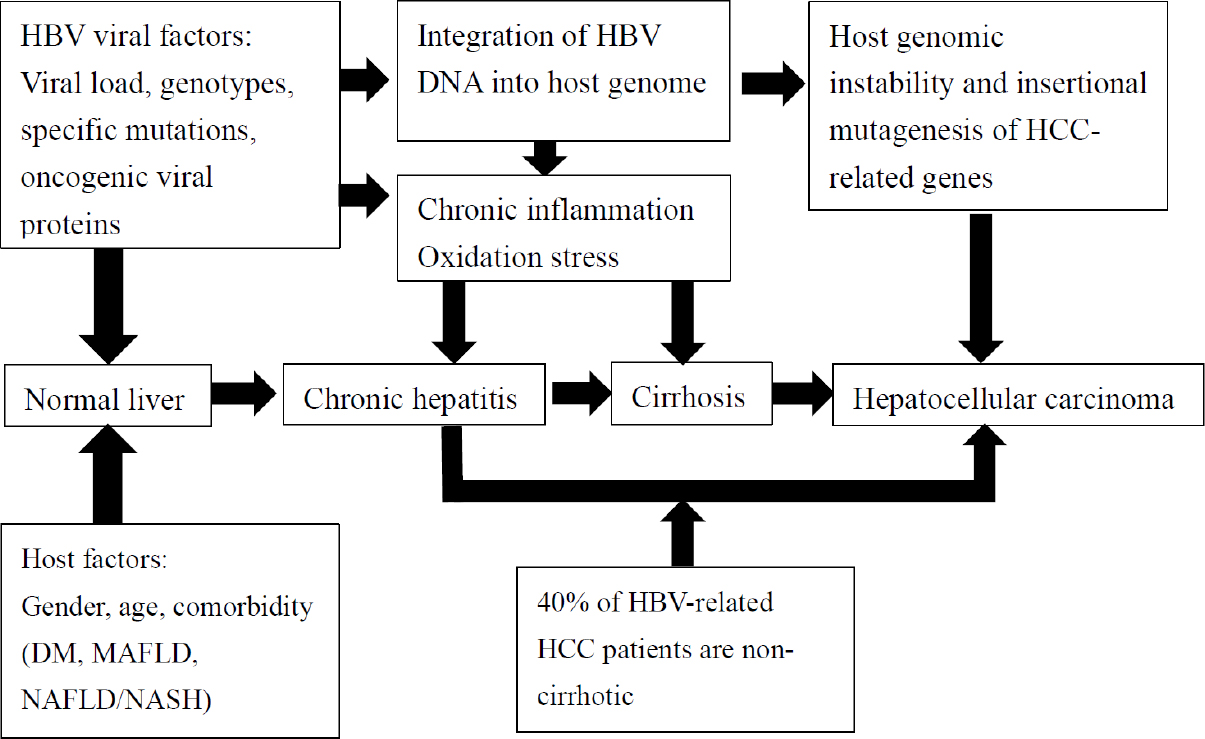



Prevention Of Hepatitis B Virus Related Hepatocellular Carcinoma
Dr Hwang is cochair of the ASCO Provisional Clinical Opinion Committee on Hepatitis B Screening and am lead author of the panel's 15 updated recommendation She is an invited member of the AASLD Hepatitis B Practice Guidelines Systematic Review and Writing Group;(4) monitoring of untreated patients; Abstract Recognizing the importance of timely guidance regarding the rapidly evolving field of hepatitis C management, the American Association for the Study of Liver Diseases (AASLD) and the Infectious Diseases Society of America (IDSA) developed a webbased process for the expeditious formulation and dissemination of evidencebased recommendations
Screening for hepatocellular carcinoma in patients with hepatitis C cirrhosis a costutility analysis Am J Gastroenterol 03 Mar 98 (3) MedlineLiver cancer screening can be done as part of your regular visit to a knowledgeable health care provider The American Association for the Study of Liver Diseases (AASLD) recommends that liver cancer screening include ultrasound of the liver every 6 months Liver specialists may also order the alphafetoprotein (AFP) blood test every 6 monthsSurveillance for hepatocellular carcinoma with liver ultrasound examination, with or without alpha fetoprotein (AFP), every 6 months is recommended for patients with cirrhosis a in accordance with the AASLD guidance on the diagnosis, staging, and management of hepatocellular carcinoma Low, Conditional b
According to the Centers for Disease Control and Prevention (CDC), an estimated 68% of people with chronic hepatitis B are unaware of their infection, 3 and many remain asymptomatic until onset of cirrhosis or endstage liver disease 4,5 This contributes to delays in medical evaluation and treatment and ongoing transmission to sex partners andPRACTICEGUIDELINE AASLD Guidelines for Treatment of Chronic Hepatitis B Norah A Terrault,1 Natalie H Bzowej,2 KyongMi Chang,3 Jessica P Hwang,4 Maureen M Jonas,5 and M Hassan Murad6 See Editorial on Page 31 Objectives and Guiding PrinciplesThe Centers for Medicare & Medicaid Services (CMS) has determined that the evidence is sufficient to conclude that screening for Hepatitis B Virus (HBV) infection, consistent with the grade A and B recommendations by the US Preventive Services Task Force (USPSTF), is reasonable and necessary for the prevention or early detection of an illness or disability and is




Management Of Chronic Hepatitis B An Overview Of Practice Guidelines For Primary Care Providers American Board Of Family Medicine




Screening Of Hepatitis B sld 18 Hepatitis B Guidane
HCC Recall and Diagnosis Patients with a lesion ≥1 cm on ultrasound or AFP > ng/mL on surveillance imaging should undergo diagnostic evaluation with a multiphasic CT or MRI 14 The AASLD guidelines endorse the use of LIRADS, a comprehensive system that aims to standardize the interpretation and reporting for diagnostic imaging 1 AASLD GUIDELINES FOR DIAGNOSIS & TREATMENT OF CHRONIC HEPATITIS B 14 DR SREEJITH JR2 MEDICINE 2 • Official recommendations of AASLD on the treatment of chronic hepatitis B (CHB) virus (HBV) infection in adults and children • Multiple systematic reviews of literature were conducted 3 Screening includes HBsAg and antiHBsAg testing AntiHAg testing may be used, but patients with positive test results should also be screened with HBsAg and antiHBsAg testing to differentiate




Estimating The Proportion Of People With Chronic Hepatitis B Virus Infection Eligible For Hepatitis B Antiviral Treatment Worldwide A Systematic Review And Meta Analysis The Lancet Gastroenterology Hepatology
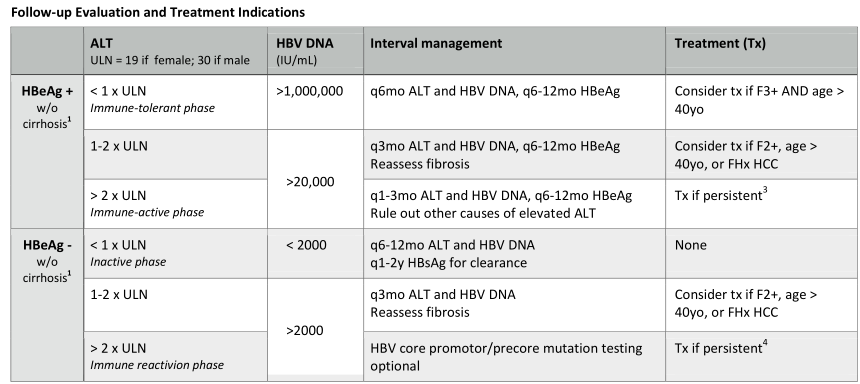



5 Pearls On Chronic Hepatitis B Part 2 Management Core Im Podcast
Screening for hepatitis B infection The following recommendations are from the 18 AASLD guidance update 48 Perform screening with both hepatitis B surface antigen (HBsAg) and antibody toAsian female hepatitis B carriers over age 50 02 03%06% per year Hepatitis B carrier with family history of HCC 02 Incidence higher than without family history African and/or North American blacks with hepatitis B 02 HCC occurs at a younger age Hepatitis B carriers with cirrhosis 0215 3%8% per year Hepatitis C cirrhosis 15 3%5% per yearGuideline recommendations were updated in 15, also published guidance on




sld Guidelines For The Treatment Of Hepatocellular Carcinoma Heimbach 18 Hepatology Wiley Online Library




Primary Liver Cancer Hepatocellular Carcinoma And Cholangiocarinoma Patrick
In the March 6 issue of the Annals of Internal Medicine, there is an article entitled "Screening for Liver Cancer A Rush to Judgment" 1 In it, the investigators criticize the AASLD recommendations on screening for HCC 2, 3 The basis for their criticism is that the only randomized, controlled trial (RCT) that showed a benefit 4 to Guideline Terrault NA, Lok ASF, McMahon BJ, et al Update on prevention, diagnosis, and treatment of chronic hepatitis B AASLD 18 hepatitis B guidance Hepatology 18 Apr 67 (4)Liver cirrhosis is the major risk factor for hepatocellular carcinoma (HCC) All etiologic forms of liver cirrhosis may be complicated by HCC but the risk is higher in patients with hepatitis B or C viral infection Patients at high risk for developing HCC should be included in surveillance programs




Update On Prevention Diagnosis And Treatment Of Chronic Hepatitis B sld 18 Hepatitis B Guidance Terrault 18 Hepatology Wiley Online Library
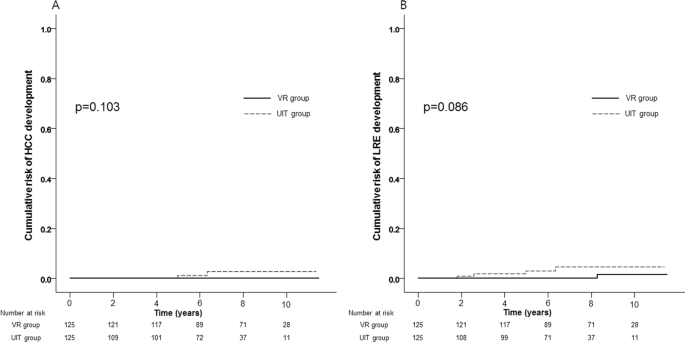



Comparison Between Chronic Hepatitis B Patients With Untreated Immune Tolerant Phase Vs Those With Virological Response By Antivirals Scientific Reports
(3) specialized virological and serological tests;Conclusions Our findings show remarkably poor adherence to AASLD guidelines, particularly in the areas of liver biopsy, timely HCC and ALT monitoring, and testing for coinfection These findings call for greater efforts to meet physician knowledge gaps, incorporation of decision support tools, and improved communication among providersThe 18 updated guidance on chronic hepatitis B (CHB) includes (1) updates on treatment since the 16 HBV guidelines (notably the use of tenofovir alafenamide) and guidance on (2) screening, counseling, and prevention;



Www sld Org Sites Default Files 19 06 sld 18 Hcc Guidance On Diagnosis 2c Staging And Management Hep 281 29 Pdf




Easl 17 Clinical Practice Guidelines On The Management Of Hepatitis B Virus Infection Journal Of Hepatology
An estimated 862,000 persons in the US are living with chronic infection with hepatitis B virus (HBV) 1 Persons born in regions with a prevalence of HBV infection of 2% or greater, such as countries in Africa and Asia, the Pacific Islands, and parts of South America, often become infected at birth and account for up to 95% of newly reported chronic infections in the US Hepatocellular carcinoma (HCC) arises in the context of cirrhosis and chronic hepatitis B virus (HBV) infections, and the diagnosis is often made at advanced stages Because earlystage diagnosis improves survival, guidelines recommend screening patients at risk for HCC, such as patients with cirrhosis However, adherence to screening programs The HCC screening method recommended in the 18 AASLD Hepatitis B Guidance is ultrasonography every 6 months, with or without serum alphafetoprotein;




Surveillance For Hepatocellular Carcinoma Current Best Practice And Future Direction Gastroenterology
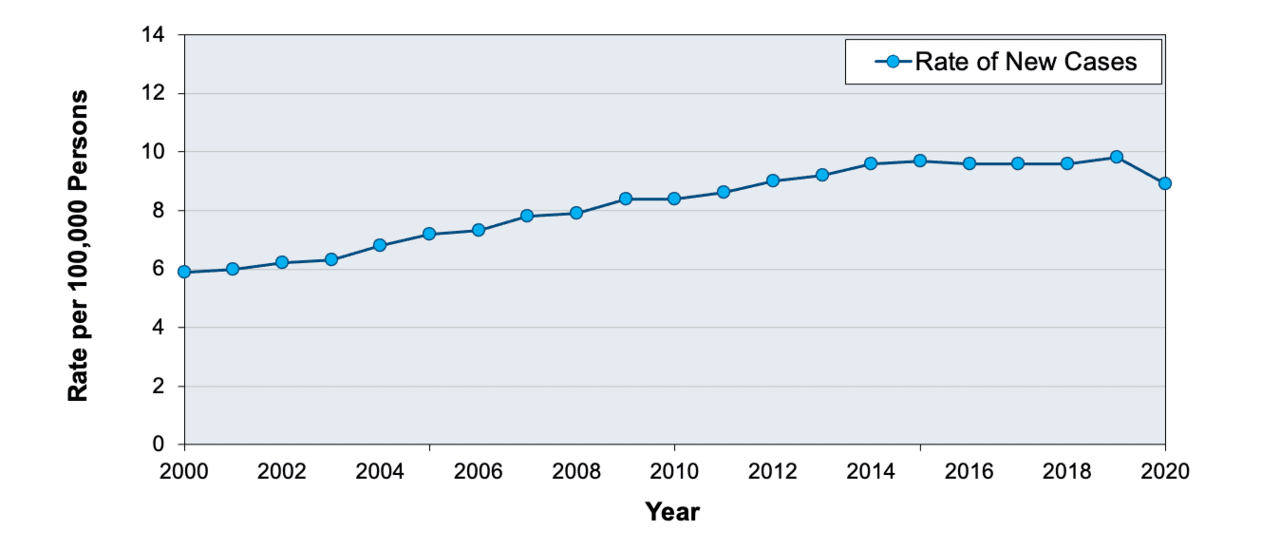



Core Concepts Surveillance For Hepatocellular Carcinoma Evaluation Staging And Monitoring Of Chronic Hepatitis C Hepatitis C Online
Almost all adult patients with cirrhosis and some patients with chronic hepatitis B virus (HBV) are at sufficiently high risk for developing hepatocellular carcinoma (HCC), so they should be enrolled in a screening and surveillance program A family history of HBVrelated HCC or cirrhosis should influence the decision not only to start treatment for hepatitis B, but also to initiate longterm screening for HCC The AASLD recommends HCC screening in hepatitis B surface antigen (HBsAg)–positive patients with a firstdegree family member with a history of HCCRecommendations The incidence of HCC is increasing both in Europe and worldwide;




How To Improve Hcc Surveillance Outcomes Jhep Reports




Prevention Of Hepatitis B Virus Related Hepatocellular Carcinoma
Guideline Terrault NA, Lok ASF, McMahon BJ, et al Update on prevention, diagnosis, and treatment of chronic hepatitis B AASLD 18 hepatitis B guidance Hepatology 18 Apr 67 (4)Our findings show remarkably poor adherence to AASLD guidelines, particularly in the areas of liver biopsy, timely HCC and ALT monitoring, and testing for coinfection These findings call for greater efforts to meet physician knowledge gaps, incorporation of decision support tools, and improved communication among providers22 CliniCal liver Disease, vOl 16, nO 1, JUlY An Official Learning Resource of AASLD review Management of HCV After SVR Pearlman 5year mortality rate was lowest (17%) relative to the other subgroups who did not have favorable Baveno VI criteria and aviremia (Fig 2)8 HCC sCreeninG




Summary Of Guidelines For Hepatocellular Carcinoma Hcc Screening Download Scientific Diagram




Core Concepts Hepatitis B Coinfection Co Occurring Conditions National Hiv Curriculum
Recommendations 8A The AASLD suggests antiviral therapy to reduce the risk of perinatal transmission of hepatitis B in HBsAgpositive pregnant women with an HBV DNA level >0,000 IU/mL Quality/Certainty of Evidence Low Strength of Recommendation Conditional Technical Remarks1 To see the most recent recommendations pertaining to surveillance for hepatocellular carcinoma, open the document AASLD Guidelines for the Treatment of Hepatocellular Carcinoma 2 Review pages , including the recommendations atScreening for Hepatitis B and hepatocellular carcinoma if they have active disease, and may need antiviral therapy As primary care providers, nurse practitioners (NPs) may be the first and sometimes the only health care AASLD recommends screening men with chronic HBV infection for HCC starting at age 40 and women at 50, including




Practice Guidelines sld




Update On Prevention Diagnosis And Treatment Of Chronic Hepatitis B sld 18 Hepatitis B Guidance Terrault 18 Hepatology Wiley Online Library
Hepatocellular carcinoma (HCC) arises in the context of cirrhosis and chronic hepatitis B virus (HBV) infections, and the diagnosis is often made at advanced stages Because earlystage diagnosis improves survival, guidelines recommend screening patients at risk for HCC, such as patients with cirrhosisAASLD Guidelines for Treatment of Chronic Hepatitis B Website View November 15 AASLD Guidelines for Treatment of Chronic Hepatitis B(link is external) Website View Three systematic reviews that were commissioned to support the guideline were published in January 16Update on Prevention, Diagnosis, and Treatment of Chronic Hepatitis B AASLD 18 Hepatitis B Guidance Norah A Terrault,1 Anna SF Lok,2 Brian J McMahon,3 KyongMi Chang,4 Jessica P Hwang,5 Maureen M Jonas,6 Robert S Brown Jr,7 Natalie H Bzowej,8 and John B Wong9 Purpose and Scope of the




Pdf Epidemiology Risk Factors And Surveillance Of Hepatocellular Carcinoma Semantic Scholar




Comparison Of The Current International Guidelines On The Management Of Hcc Jhep Reports
The disease occurs when recurrent cycles (flares) of immunemediated Guideline Terrault NA, Lok ASF, McMahon BJ, et al Update on prevention, diagnosis, and treatment of chronic hepatitis B AASLD 18 hepatitis B guidance Hepatology 18 Apr 67 (4)The American Association for the Study of Liver Diseases (AASLD17) routine screening is recommended for HCC in adults with cirrhosis The initial screening is performed with ultrasound (US) with or without alpha fetoprotein (AFP) every 6 months




Guidance For Design And Endpoints Of Clinical Trials In Chronic Hepatitis B Report From The 19 Easl sld Hbv Treatment Endpoints Conference Journal Of Hepatology
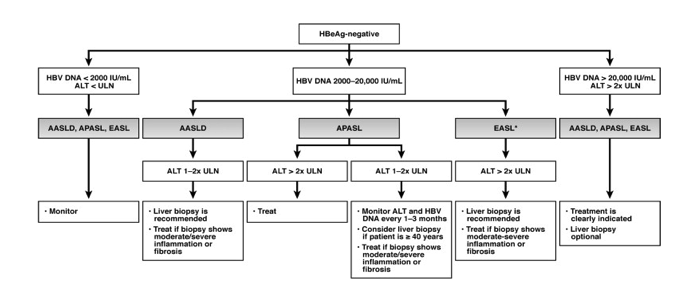



Management Of Hepatitis B Our Practice And How It Relates To The Guidelines
Henderson DK, Dembry L, Fishman NO, et al SHEA guideline for management of healthcare workers who are infected with hepatitis B virus, hepatitis C virus, and/or human immunodeficiency virus Infect Control Hosp Epidemiol 10;31(3)3232 Terrault NA, Lok ASF, McMahon BJ, et al Update on prevention, diagnosis, and treatment of chronic hepatitis B AASLD 18 hepatitis B guidance Hepatology 18; PubMed Abstract Weinbaum CM, Williams I, Mast EE, et al Recommendations for identification and public health management of persons with chronic hepatitis B virus infection New AASLD Guidelines for Hepatocellular Carcinoma The Big Questions Tackled David A Johnson, MD hepatitis B virus infection 17 Gastroenterological Society of Australia Australian Gastroenterology Week 17 GUIDE TO HEPATITIS C TESTING 17 IDWeek 17 International Conference on Viral Hepatitis
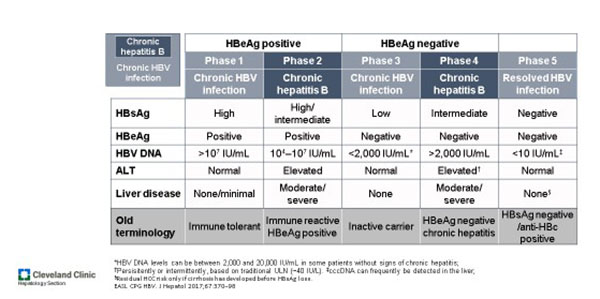



Hepatitis B Cleveland Clinic




sld Guidelines
the United States with chronic hepatitis B1,2 Approximately 25% of children and 15% of adults with chronic hepatitis B die prematurely from hepatocellular carcinoma (HCC) orThe idea behind hepatocellular carcinoma screening, as with any screening program, is to detect clinically silent cancer earlier when treatment should have a better prognosis Current recommendations Current recommendations for surveillance derive from a 04 randomized controlled trial conducted in China with patients with chronic hepatitis B 1In children with cirrhosis, liver ultrasound with or without serum alphafetoprotein (AFP) testing every 6 months is recommended for HCC surveillance per AASLD guidelines (Marrero, 18) A baseline endoscopy is advisable to detect esophageal varices in children with cirrhosis and every 3 years thereafter in the absence of viral clearance
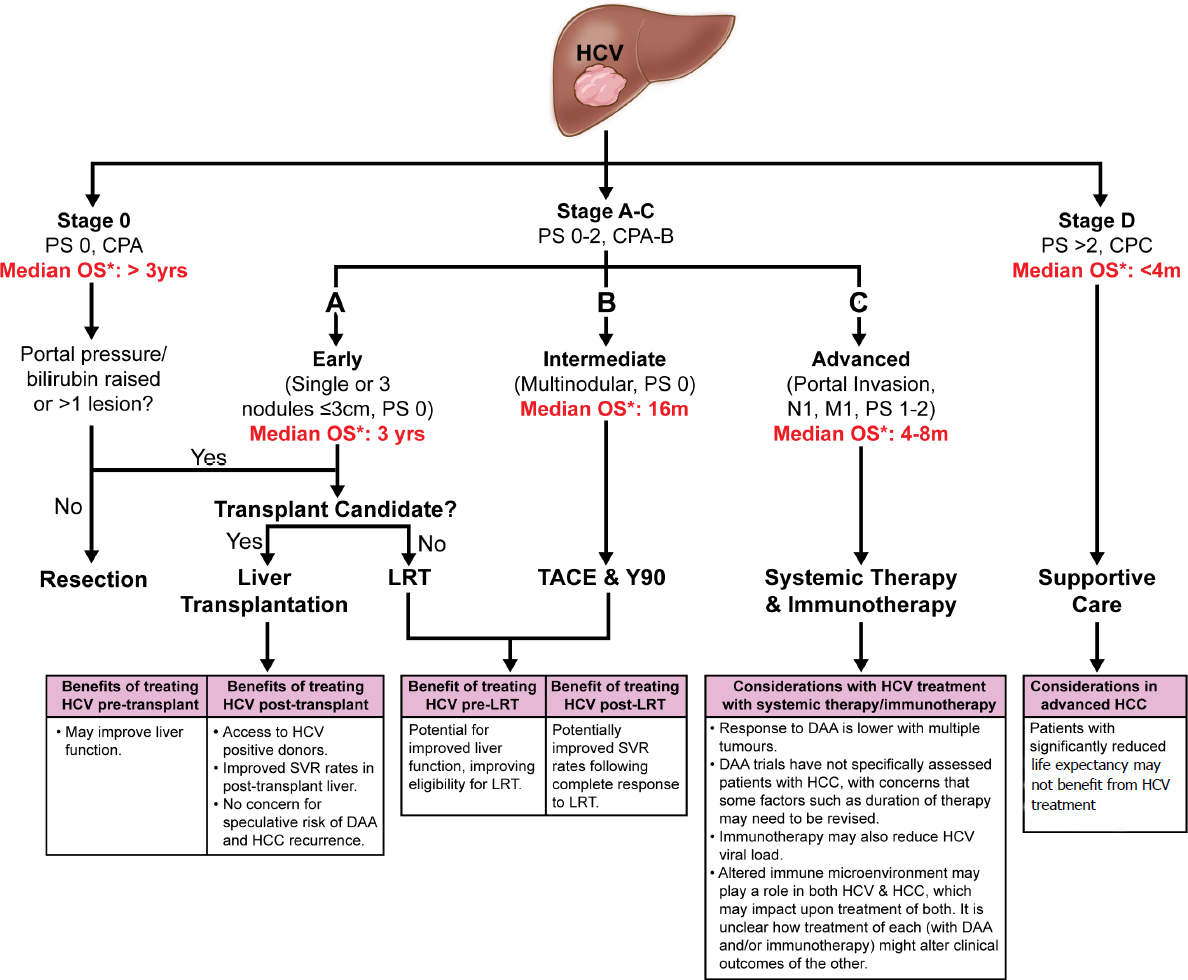



Management Of Concomitant Hepatocellular Carcinoma And Chronic Hepatitis C A Review
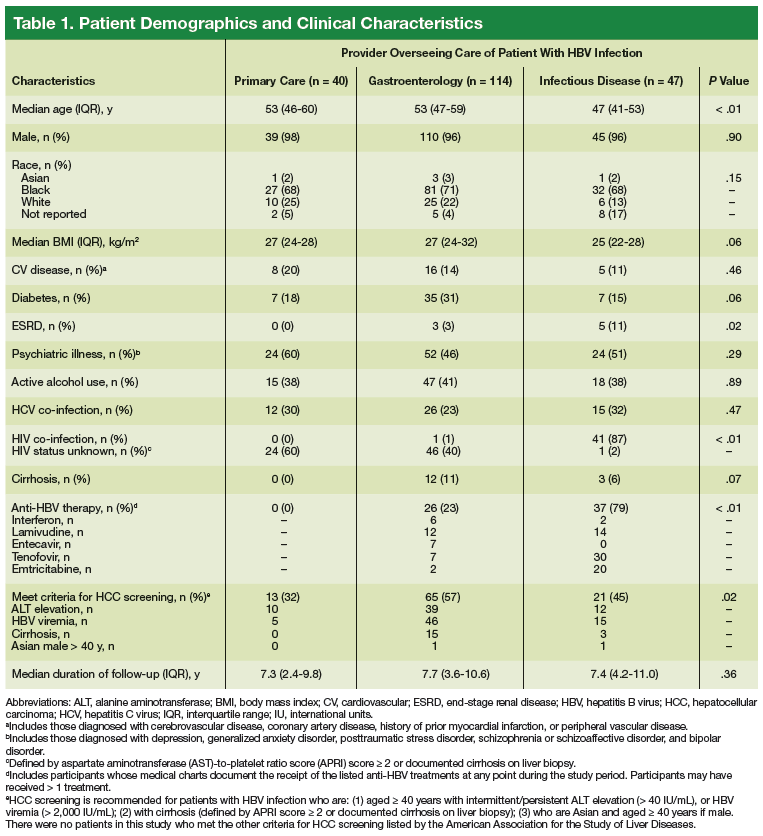



Strategies To Improve Hepatocellular Carcinoma Surveillance In Veterans With Hepatitis B Infection Full Federal Practitioner
The most common HCC screening modality was AFP with abdominal ultrasound every 612 months (63%) Factors associated with HBV screening were familiarity with AASLD guidelines (OR 64, 95% CI , p = 002) and having vaccinated >50% of eligible patients against HBV (OR 22, 95% CI 1145, p = 003)Media Contacts Nola Gruneisen, AASLD, 571‐292‐3068 Lauren Martin, IDSA, () HCVguidelinesorg — a website developed by the American Association for the Study of Liver Diseases and the Infectious Diseases Society of America to provide uptodate guidance on the management of hepatitis C — was recently revised to reflect important Chronic hepatitis B is a clinically silent and indolent disease with a long period of latency before significant adverse outcomes, such as cirrhosis, decompensated liver disease, or hepatocellular carcinoma, become manifest The hepatitis B virus (HBV) is not directly cytopathic to hepatocytes;



Deepblue Lib Umich Edu Bitstream Handle 27 42 Ftp Pdf Sequence 1




Surveillance For Hepatocellular Carcinoma Current Status And Advances




Cldf




Recommendations On Hcc Surveillance In Hbv Patients By Liver Associations Download Table
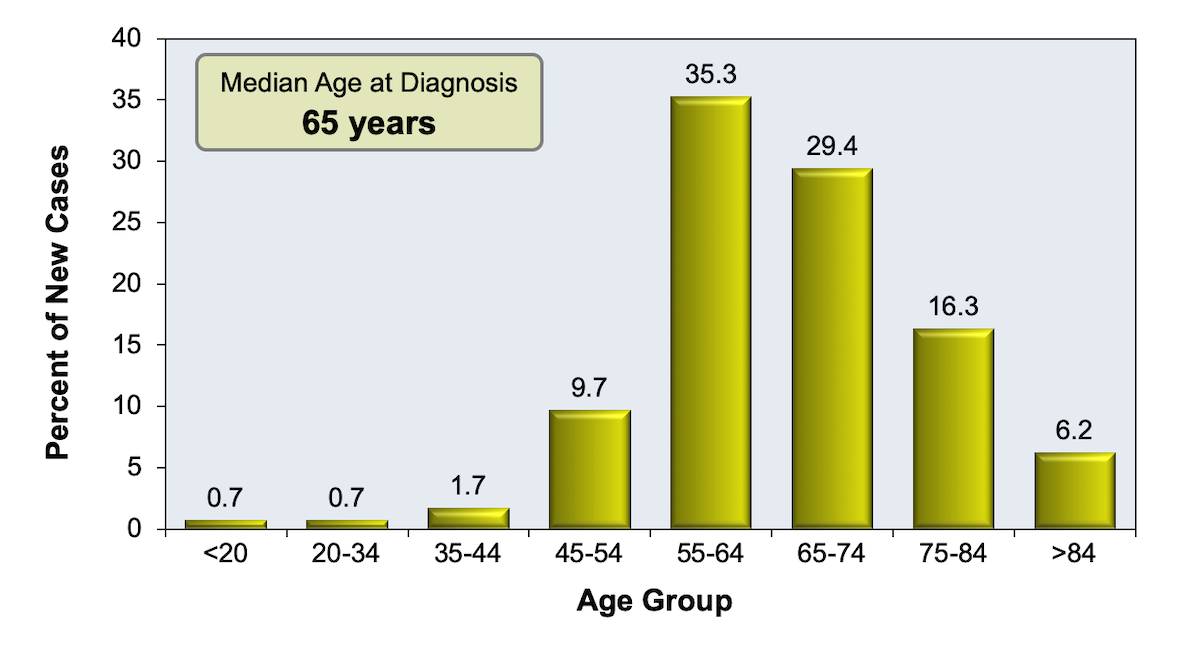



Core Concepts Surveillance For Hepatocellular Carcinoma Evaluation Staging And Monitoring Of Chronic Hepatitis C Hepatitis C Online




Pdf Hepatocellular Carcinoma Epidemiology Pathogenesis And Surveillance Implications For Sub Saharan Africa Semantic Scholar
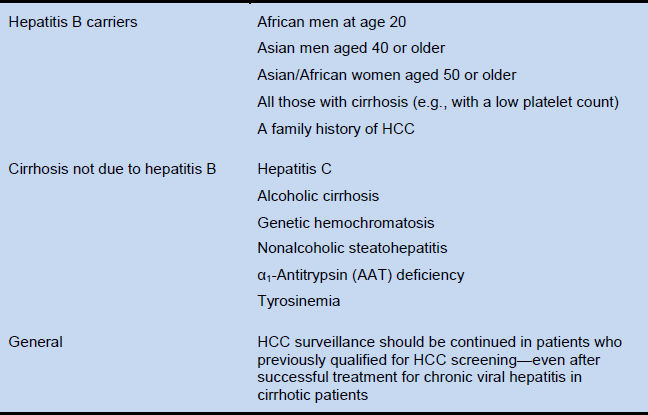



English World Gastroenterology Organisation




Core Concepts Surveillance For Hepatocellular Carcinoma Evaluation Staging And Monitoring Of Chronic Hepatitis C Hepatitis C Online




Comparison Of Current Clinical Practice Guidelines For Chronic Download Scientific Diagram



Hepatocellular Carcinoma Epidemiology Pathogenesis And Surveillance Implications For Sub Saharan Africa



Http Unmhospitalist Pbworks Com F Hep B Management Guidelines sld Pdf
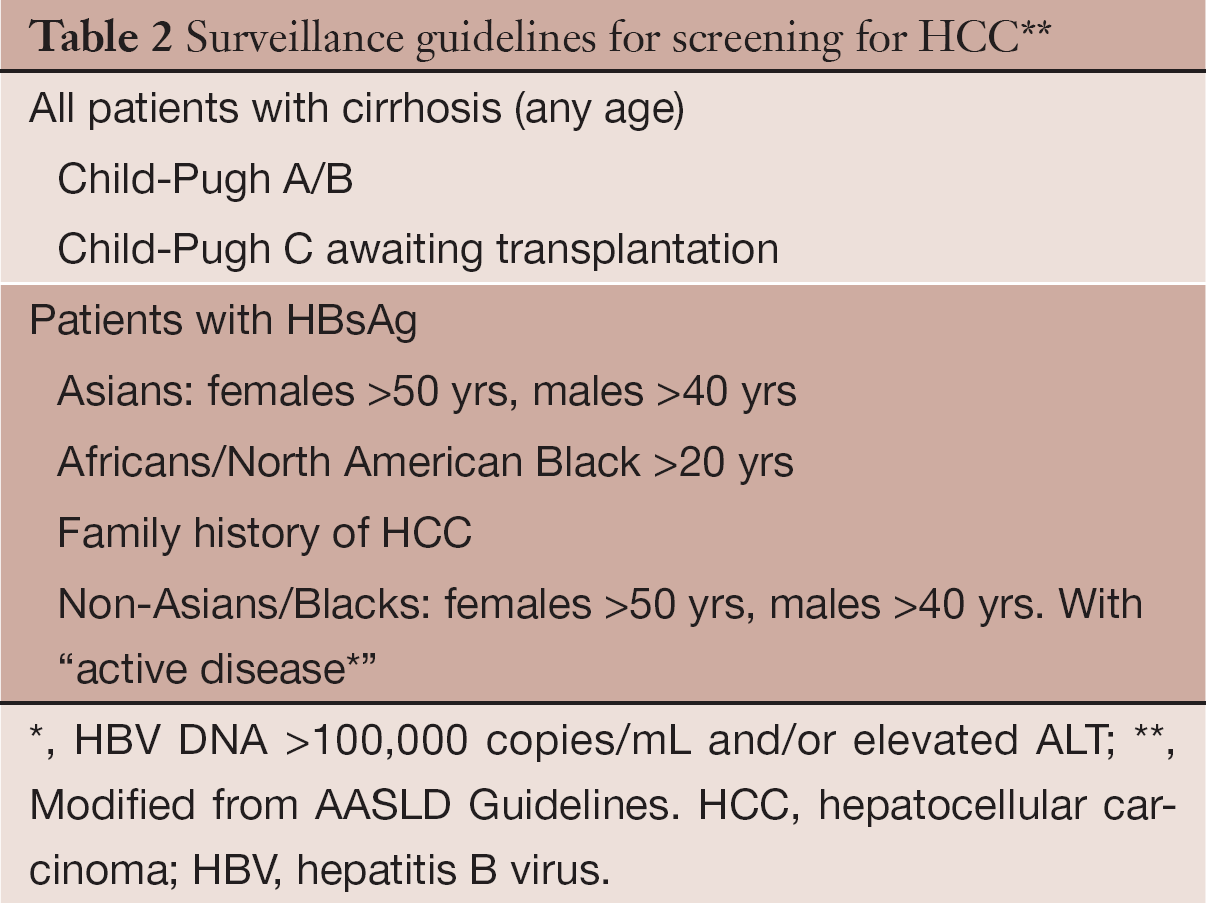



Hepatocellular Carcinoma The Rising Tide From East To West A Review Of Epidemiology Screening And Tumor Markers Monsour Jr Translational Cancer Research



Q Tbn And9gcszlahcs9wwfzwqvgux9g5g7foogpu9rhsi9umgtemw6echfwgz Usqp Cau
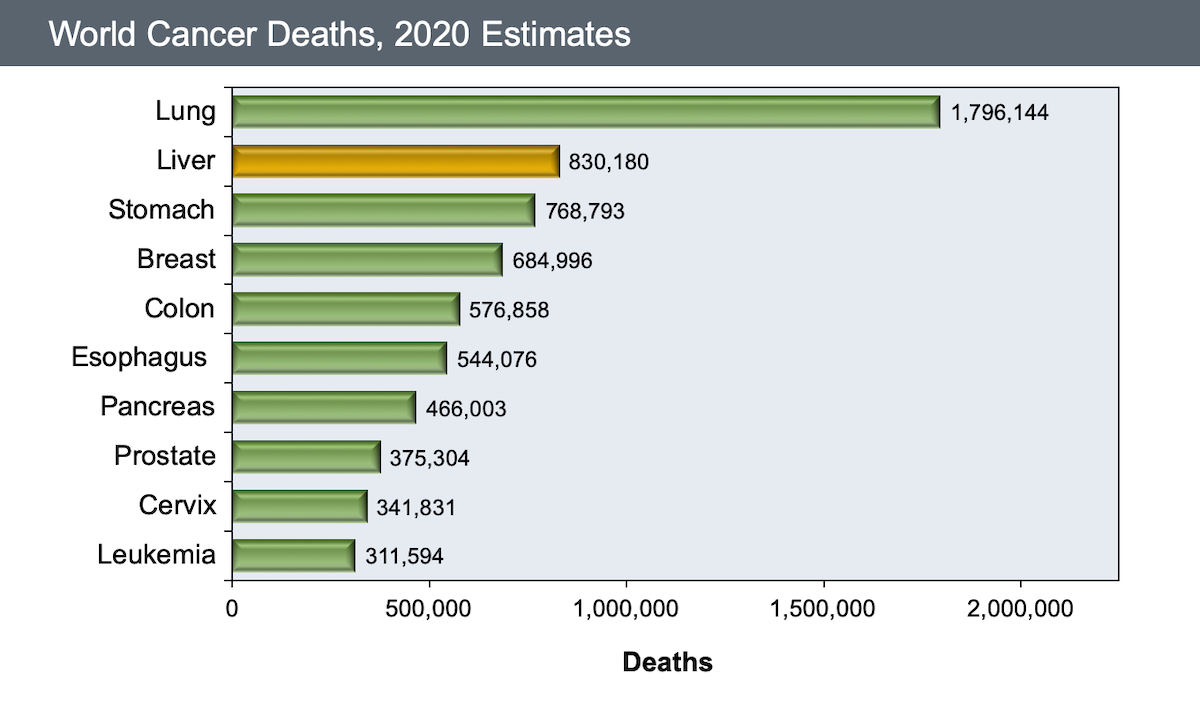



Core Concepts Surveillance For Hepatocellular Carcinoma Evaluation Staging And Monitoring Of Chronic Hepatitis C Hepatitis C Online




Surveillance Barriers To Care Key To Federal Medicine Fight Against Hcc U S Medicine



Www Idsociety Org Globalassets Idsa Topics Of Interest Emerging Clinical Issues sldguidelinehccupdate10 1 Pdf




Surveillance Imaging And Alpha Fetoprotein For Early Detection Of Hepatocellular Carcinoma In Patients With Cirrhosis A Meta Analysis Gastroenterology




Hepatitis B Screening Prevention Diagnosis And Treatment American Family Physician
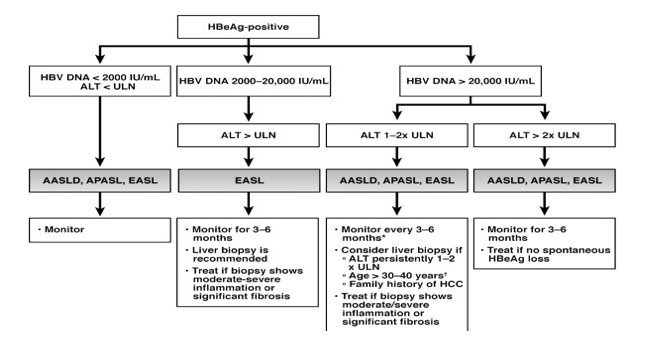



Management Of Hepatitis B Our Practice And How It Relates To The Guidelines



Www Natap Org 14 Hbv Piisx Pdf




Development Of A Simple Score Based On Hbeag And Alt For Selecting Patients For Hbv Treatment In Africa Sciencedirect
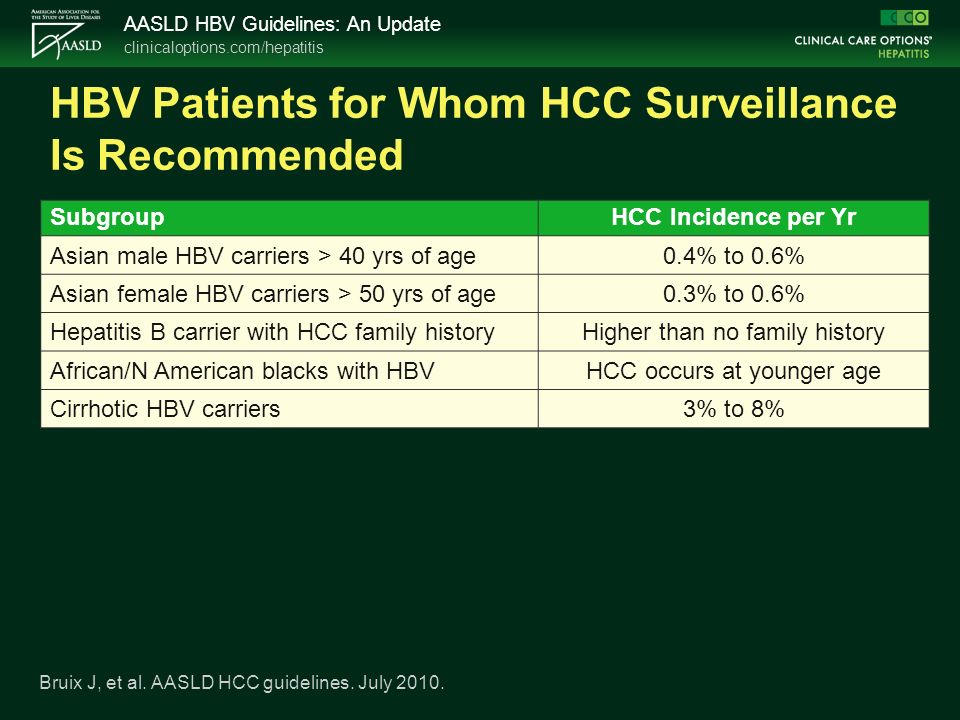



Understanding And Implementing The sld S Hbv Practice Guidelines Ppt Download




Diagnosis Staging And Management Of Hepatocellular Carcinoma 18 Practice Guidance By The American Association For The Study Of Liver Diseases Marrero 18 Hepatology Wiley Online Library



sld Guidelines




5 Pearls On Chronic Hepatitis B Part 2 Management Core Im Podcast




sld Guidelines For Diagnosis Treatment Of Chronic Hepatitis B




Core Concepts Hepatitis B Coinfection Co Occurring Conditions National Hiv Curriculum




sld Guidelines Hepatitis B Hcc Screening Cute766



Www Natap Org 14 Hbv Piisx Pdf
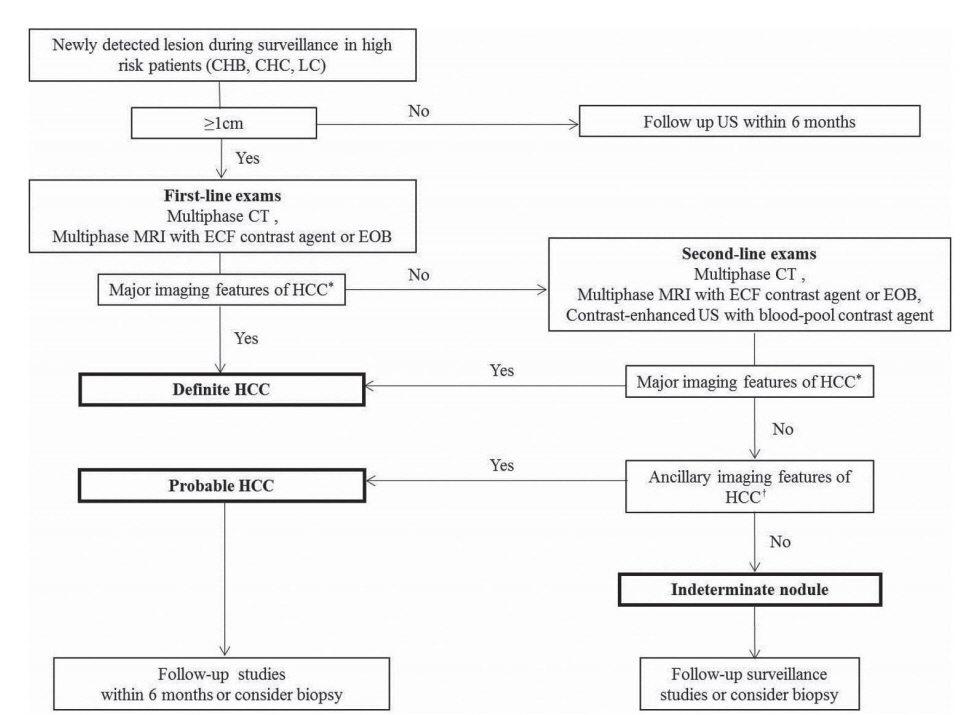



Comparison Of International Guidelines For Noninvasive Diagnosis Of Hepatocellular Carcinoma 18 Update




Multiple Roles For Hepatitis B And C Viruses And The Host In The Development Of Hepatocellular Carcinoma Wangensteen 21 Hepatology Wiley Online Library




Rate Of Hepatocellular Carcinoma Surveillance Remains Low For A Large Real Life Cohort Of Patients With Hepatitis C Cirrhosis Bmj Open Gastroenterology




sld Recommendations For Treatment Of Chronic Hepatitis B Download Table



Www sld Org Sites Default Files 19 06 sld 18 Hcc Guidance On Diagnosis 2c Staging And Management Hep 281 29 Pdf




Hepatocellular Carcinoma A Review Oncology Nurse Advisor
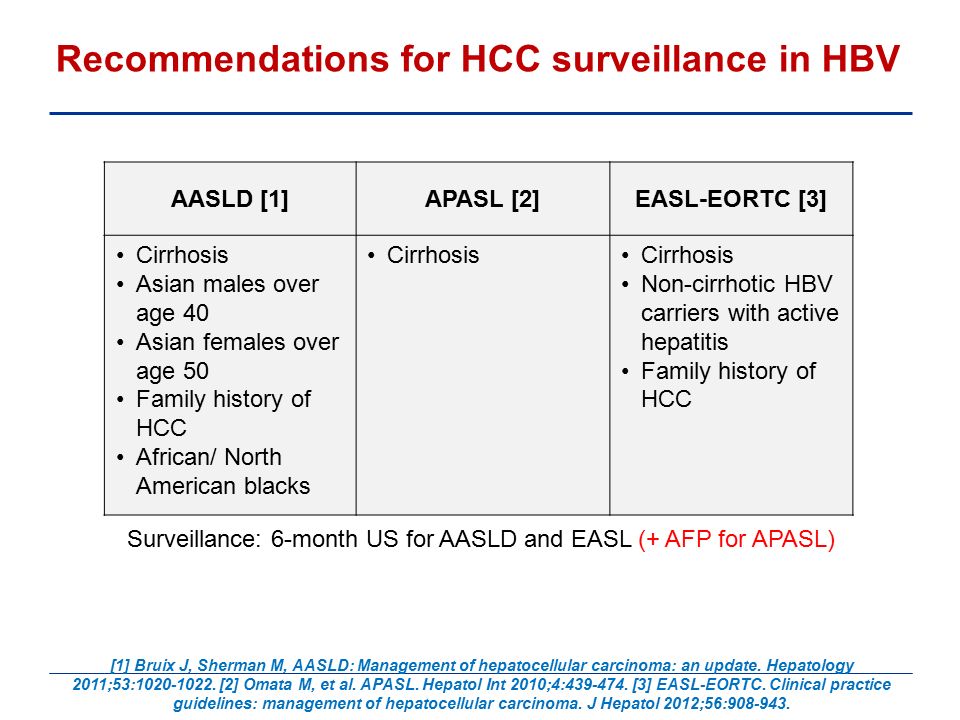



Stato Dell Arte Nella Terapia Di Hbv Ppt Download



Http Www Imagingpathways Health Wa Gov Au Index Php Imaging Pathways Gastrointestinal Liver Surveillance For Hepatocellular Carcinoma Tmpl Component Format Pdf
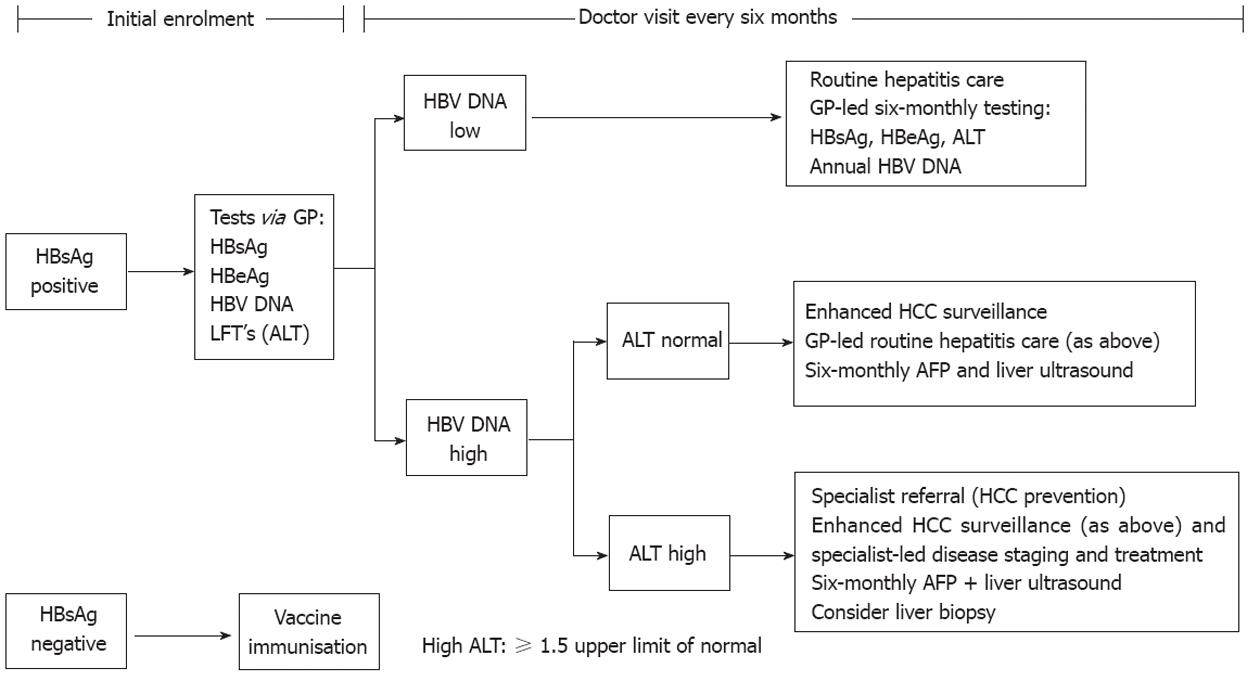



Cost Of Treating Chronic Hepatitis B Comparison Of Current Treatment Guidelines
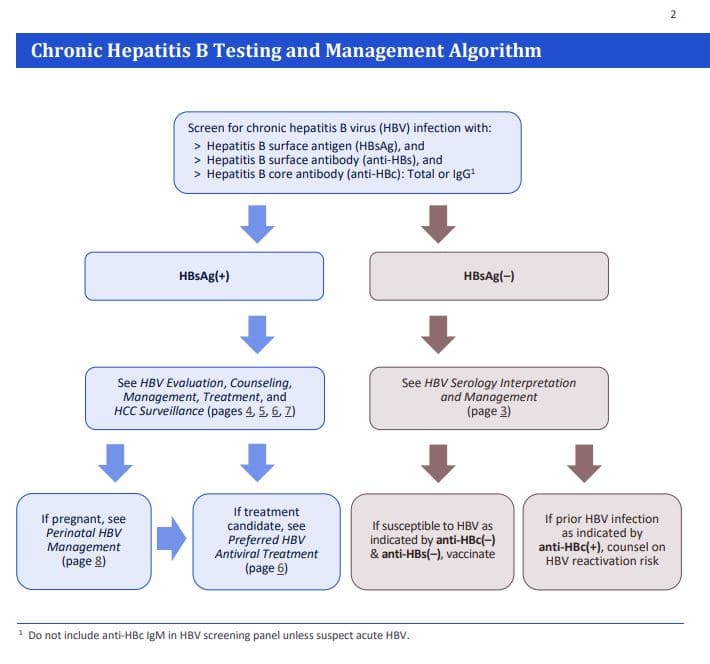



New Resource Guide To Hepatitis B Management For Primary Care Providers Hepatitis B Foundation



Www sld Org Sites Default Files 19 06 sld 18 Hcc Guidance On Diagnosis 2c Staging And Management Hep 281 29 Pdf




19 Chinese Clinical Guidelines For The Management Of Hepatocellular Carcinoma Updates And Insights Xie Hepatobiliary Surgery And Nutrition
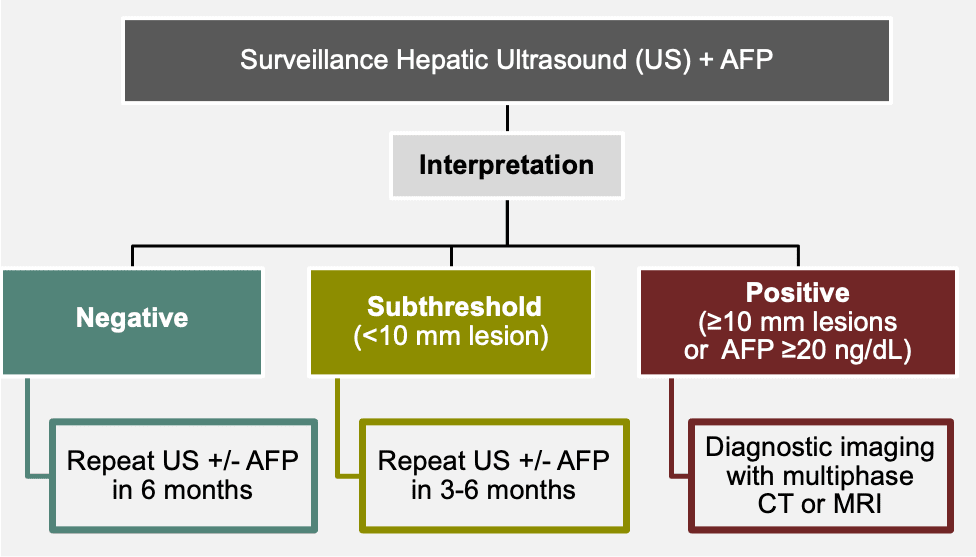



Core Concepts Screening For Hepatocellular Carcinoma Other Topics Hepatitis B Online
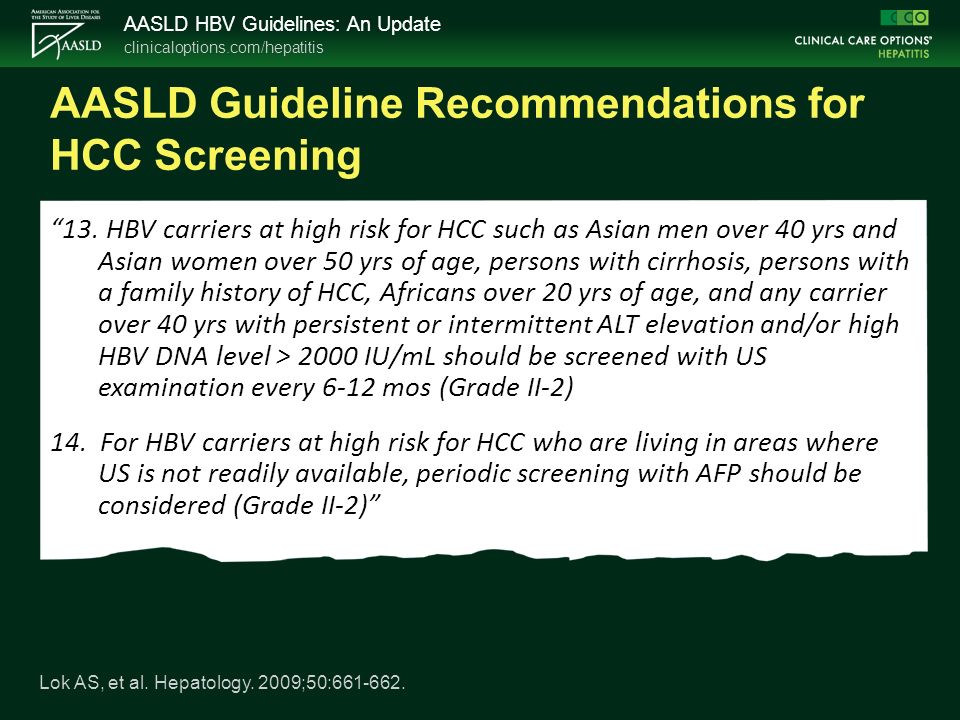



Understanding And Implementing The sld S Hbv Practice Guidelines Ppt Download




Easl 17 Clinical Practice Guidelines On The Management Of Hepatitis B Virus Infection Journal Of Hepatology



Chronic Hepatitis B




Surveillance For Hepatocellular Carcinoma In Patients With Advanced Liver Fibrosis Sangiovanni A Colombo M Saudi J Gastroenterol




sld Recommendations For Treatment Of Chronic Hepatitis C Download Table




Recommendations On Hcc Surveillance By Regional Guidelines Download Table



Q Tbn And9gctpl7o5bcz8jbfznueqmefhd1xbqyph2jowbus9mizz4modizhu Usqp Cau




Viral Hepatitis And Hepatocellular Carcinoma Etiology And Management Zamor Journal Of Gastrointestinal Oncology




Natural History Of Hepatitis B And Liver Cancer
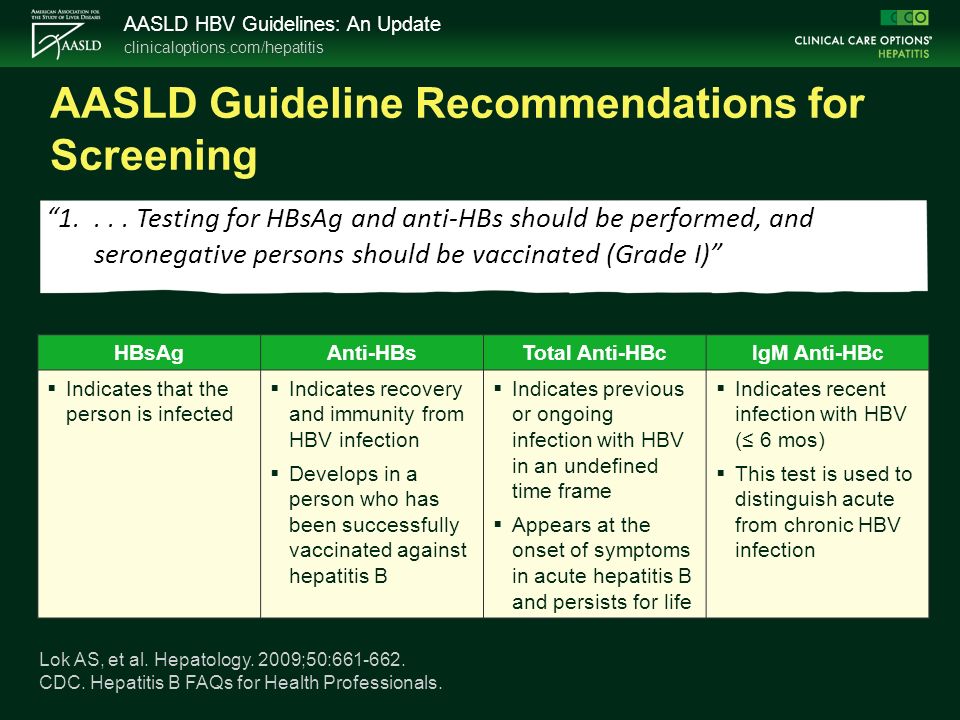



Understanding And Implementing The sld S Hbv Practice Guidelines Ppt Download




sld Guidelines Hepatitis B 18 Ppt




sld Updates Chronic Hepatitis B Recommendations Practice Guidelines American Family Physician




sld Guidelines Hepatitis B Hcc Screening Cute766




Status Of And Strategies For Improving Adherence To Hcc Screening And Surveillance Oncology Nurse Advisor



Chronic Hepatitis B Treatment Hepbmd




Hepatitis B Screening Prevention Diagnosis And Treatment American Family Physician



Www Idsociety Org Globalassets Idsa Topics Of Interest Emerging Clinical Issues sldguidelinehccupdate10 1 Pdf




Screening Is Associated With A Lower Risk Of Hepatocellular Carcinoma Related Mortality In Patients With Chronic Hepatitis B Sciencedirect




A Practical Guideline For Hepatocellular Carcinoma Screening In Patients At Risk Mayo Clinic Proceedings Innovations Quality Outcomes




Occult Hepatitis B Infection And Hepatocellular Carcinoma Epidemiology Virology Hepatocarcinogenesis And Clinical Significance Journal Of Hepatology




Management Of Chronic Hepatitis B An Overview Of Practice Guidelines For Primary Care Providers American Board Of Family Medicine




Easl 17 Clinical Practice Guidelines On The Management Of Hepatitis B Virus Infection Journal Of Hepatology




Figure A Proposed Liver Ultrasound Algorithm For Surveillance Of Download Scientific Diagram




Understanding And Implementing The sld S Hbv Practice Guidelines Ppt Download



1




Hepatitis B Screening Prevention Diagnosis And Treatment American Family Physician




One World One Pandemic Many Guidelines Management Of Liver Diseases During Covid 19 Gut



Q Tbn And9gcqxlq7ehbjyurwnjmgnm9ovgfge4l59duyvu9d1ztybh5lu9dy Usqp Cau



Www sld Org Sites Default Files 19 06 sld 18 Hcc Guidance On Diagnosis 2c Staging And Management Hep 281 29 Pdf




sld Guidelines Hepatitis B




Hcc Surveillance After Svr In Patients With F3 F4 Fibrosis Journal Of Hepatology
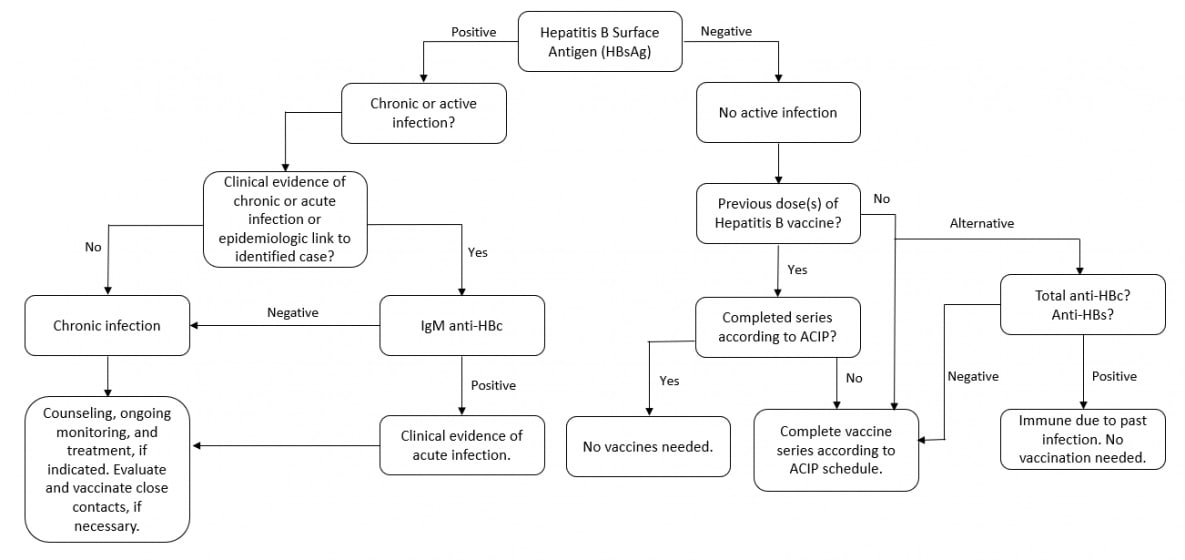



Screening For Viral Hepatitis During The Domestic Medical Examination Of Newly Arrived Refugees Immigrant And Refugee Health Cdc
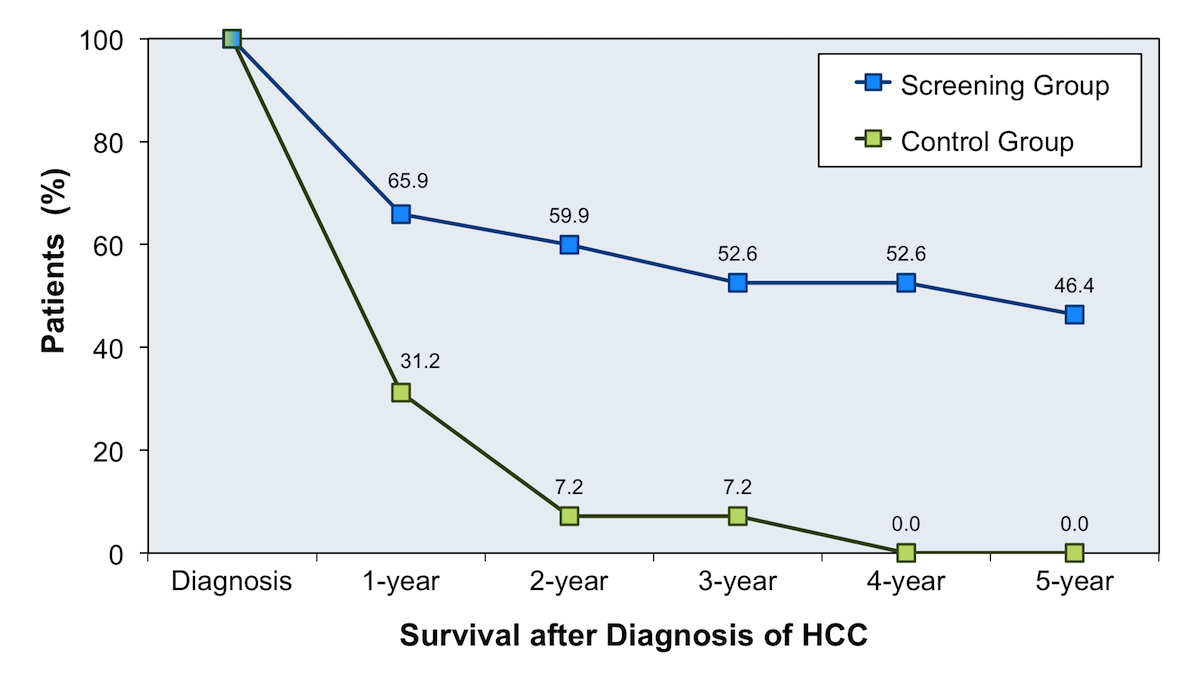



Core Concepts Surveillance For Hepatocellular Carcinoma Evaluation Staging And Monitoring Of Chronic Hepatitis C Hepatitis C Online




Screening Is Associated With A Lower Risk Of Hepatocellular Carcinoma Related Mortality In Patients With Chronic Hepatitis B Journal Of Hepatology




Hcv Research And News Management Of Hepatitis B




Practice Guidelines sld


